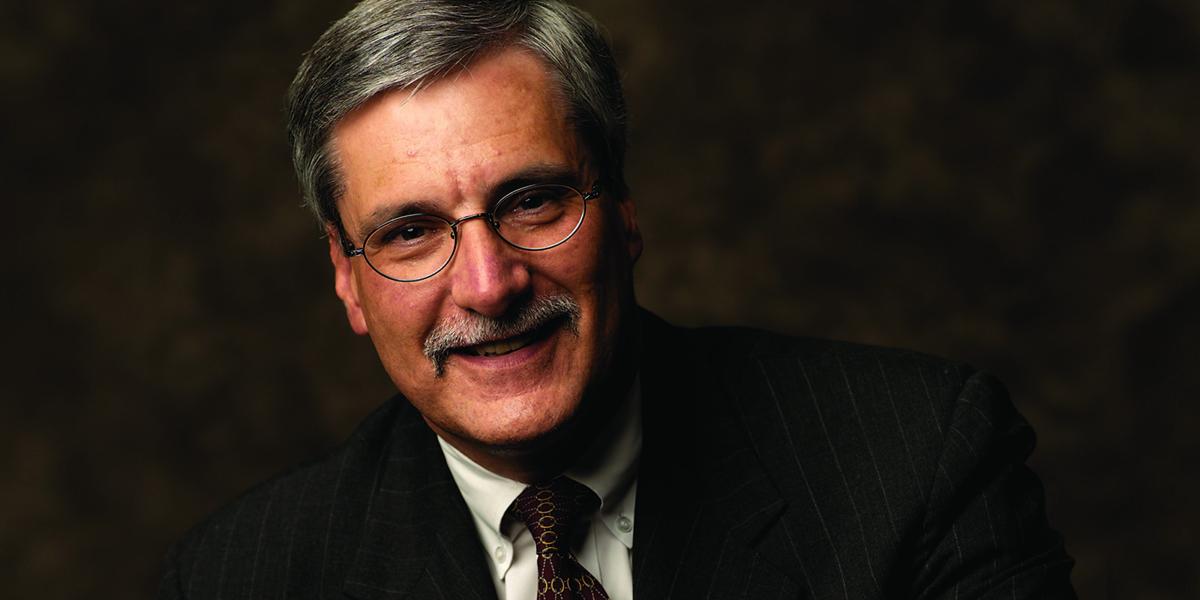Open Mike: Communication Breakdown
Aside from the use of photocopy and fax machines, the transfer of health care information has not changed much since William Henry Welch founded our School.
Why are all the row homes in Baltimore built of bricks? Because after much of the city burned down in 1904, wooden structures were outlawed. One reason for the all-consuming fire was that fire departments used different size hose couplings. Unable to hook their hoses up to fire hydrants, firefighters from surrounding regions could only stand and watch helplessly as the city burned to rubble.
We have a similar problem now in the Digital Age. Instead of water, we have problems sharing health information. We generate lots of health data, but over the past decades our health care system has evolved into a hodge-podge of separate informational silos. Hospitals, physicians, insurance companies and pharmacies—all have different size "hose couplings." So sharing information between or within silos, even in life-threatening situations, is extremely difficult and slow. Witness the aftermath of Hurricane Katrina, when thousands of people with chronic disease could not access drug names and dosages for their prescription medications.
Inefficiency means that we are wasting resources that could be used to provide care to some of the 44.8 million Americans who don't have access to health insurance. For example, when a patient is seen in a new health care setting, it is often much easier for a provider to repeat a medical test than get the result from elsewhere. Aside from the availability of photocopy and fax machines, the process of information exchange has not changed much since William Henry Welch founded our School or William Osler practiced medicine across the street.
And, too frequently, outside all the health care silos are the city and state health departments charged with protecting the public's health and, at least in our state, controlling costs and improving efficiency.
More than ever, we need strong disease surveillance programs that can warn of new outbreaks at the earliest possible moment. Detecting clusters of disease depends on systems that can talk to each other and provide accurate and timely clinical data. Better disease surveillance and monitoring can also tell us where we need to make public health interventions. Recently, for example, experts in Biostatistics and Epidemiology from our School were able to link air pollution, Medicare, weather and census data to demonstrate that even slight increases in particulate matter pollutants resulted in thousands more people being hospitalized for cardiovascular and respiratory diseases. That's a great example of turning information into knowledge—knowledge that lets us devise ways to improve health.
The irony is that many low resource countries, because they are building health systems from scratch, do a much better job than we do of using information technology to provide care, monitor the health of their population and manage their health systems. Last year, I visited a system of clinics in Soweto that provided HIV care. All records were electronic and accessible at any clinic, but there was a problem in consistently retrieving patient records because of different spellings for people's tribal names. Health system leaders solved the problem by relying on fingerprints. Patients simply place their thumbs on an electronic pad, and their records are then retrieved. The system works over multiple, networked sites. When I stopped marveling at the elegance of the solution, I asked the person behind the clinic registrar's desk where the system's software came from. He shrugged and said, "I wrote it."
Another example we could learn from: Just recently, I was in a pharmacy in a township outside of Cape Town where antiretroviral medications, a scarce and expensive resource, were dispensed. The prescriptions were bar-coded and, when dispensed, scanned. Using cell phone text messaging technology, information is sent to a central database located in a distant site that prevents duplicate prescriptions, facilitates compliance and improves quality of care.
I'm convinced that building a regional medical records system in the United States will not only improve health care at the individual patient level, but it will allow us to aggregate data at regional and national levels to create new knowledge, control costs and improve outcomes. Privacy concerns need to be respected and limited resources need to be considered, but health institutions must be able to talk to one another. Recently, I convened a task force to come up with a road map on health informatics for our School. Our country needs to do the same.
Penetrating walls of silos is always hard, replacing hose couplings is always expensive, but, just like Baltimore in 1904, we need to fix the problem.
